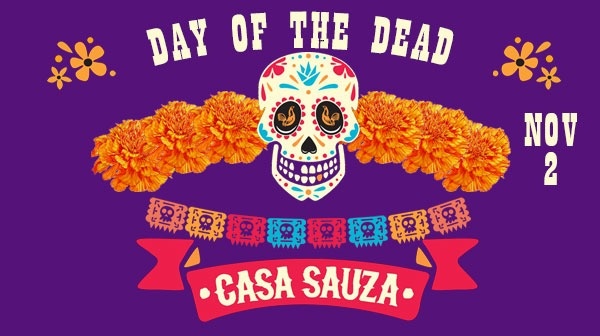We are at the end of October and the excitement and the characteristic smell of the cempasúchil flower, pan de muerto* and hot chocolate, all typical of the tradition that is closest to our roots, is in the air.
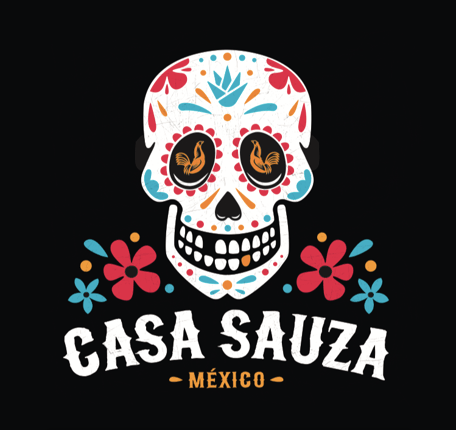
Day of the Death in Mexico
In this traditional Mexican celebration, we don't commemorate won battles, births, or memorable days, no. In this day, Mexico dresses up again with folklore and tradition, since on this day, we celebrate death being part of life, and honor all of our deceased loved ones.
The Day of the Dead is a tradition of pre-Hispanic origin. In fact, there is a record of such celebrations in the Maya, Totonaca and Purépecha ethnic groups. This celebration is considered an Intangible Cultural Heritage of Humanity by the UNESCO, and it's celebrated on November 1st and 2nd, although its preparations begin during mid-October.
During these days, Mexican families wait-for and honor the souls of their loved ones that have already left them. It's customary to bring music to the graves, make altares de muerto (altars/offerings) and of course, entertain those spirits that come to visit with the dishes and foods that they liked best.
Our gastronomy, as in many of our traditions, is key to this celebration. Not only it "dresses up" but also, expresses a lot of tradition and history. In some homes it's still customary to prepare stews as a family, it's actually one of the ways in which our recipes pass from generation to generation, by preparing typical dishes, but using unique family recipes.
Traditional Dishes
Traditional dishes are prepared, such as:
- Chicken mukibil. Mukibil is a kind of big tamale, wrapped in banana leaves and cooked underground, in a dug down oven.
- *Pan de muertos, or bread of the dead, is a kind of bread that is only made during this season. It was made by the ancient Mesoamericans with corn but, with the arrival of the Spaniards, new ingredients came -such as wheat- and it was with these new ingredients that the production of this bread evolved to become what we now know as pan de muerto.
- Another typical dish for this season is mole (sauce made with cocoa and spices)
- A very characteristic drink of this celebration is hot chocolate, which can't be left behind when eating pan de muerto. It can be made with water or milk. This drink also evolved with the arrival of the Spaniards, since it was formerly prepared with water, chili and roasted cocoa.
Sugar Calaveritas (Skulls)
A sweet flavor that keeps our tradition alive and is a perfect example of our miscegenation, are sugar claveritas. The calaveritas come from pre-Hispanic times and were used in the tzompantli (altar used in Mesoamerican cultures, decorated with human skulls, to honor their gods) as a tribute. Death was considered as the end of a stage of life, so skulls were kept as trophies and used in the tzompantli as ornaments.
With the arrival of the Spaniards, the rituals were banned because they went against the Catholic religion but, given the resistance of the people, they had to be replaced by others. The Spaniards already celebrated the day of the Faithful Deceased and they made some adjustments so that this celebration could go on. One of these adjustment was to replace the human skulls with skulls made with amaranth grain -or huazontle- and blood. These are quelites (like amaranth) were used as an offering to the dead.
With the passing of time, the technique evolved until it reached the alfeñique, which is a kind of caramel made with cane sugar. These days, calaveritas are offered as a gift during this season. The name of the person to whom it'll be given, is recorded on the forehead of this sugar skulls. They are also used as decoration and as an offering on the altars.
Sauza Celebrates this Tradition
This is how the combination of cultures turned into our very famous and traditional Day of the Dead. You can't miss experiencing this day with us and trying unique dishes of this season at La Cueva de Don Cenobio restaurant, as they are:
- Domo de cempasúchil (dessert with cempasúchil flower)
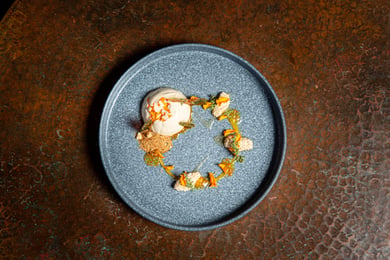
- Pan de muerto
- Bendita maldición negra cocktail. (Blessed black curse)
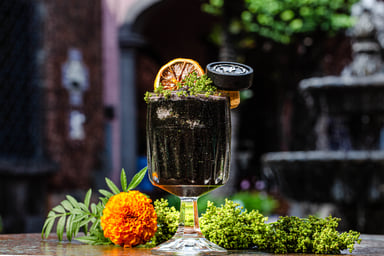
- Our cempasúchil and huazontle cantaritos and margaritas
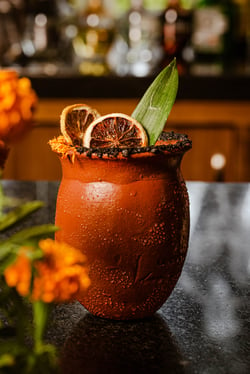
Last but not least, end this day's experience in Sauza with a homemade pan de muerto, served with a hot chocolate with flamed marshmallows and amaranth.
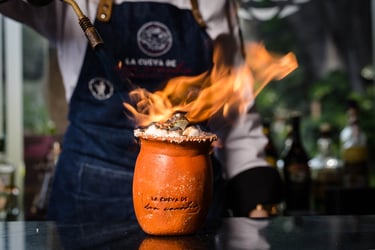
Click on the following image for more information on our celebration:
.png?width=50&height=50&name=10.CS-Redondo%20(1).png)
